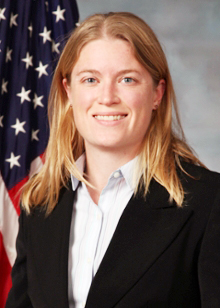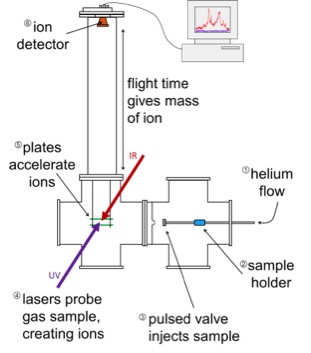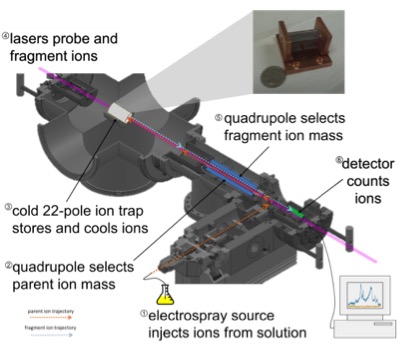Jaime Stearns
Affiliated Faculty (AFRL)

Education
B.A. Chemistry, 2000, Northwestern University
Ph. D. Chemistry, 2005, Purdue University
Postdoctoral Fellowship 2005-2008 Ecole Polytechnique de Lausanne
Research
The Laser Spectroscopy and Reactivity (LaSR) Lab
The LaSR Lab is concerned with understanding a range of physical and chemical phenomena to develop next-generation spacecraft technologies. In general, we use gas-phase spectroscopy and mass spectrometry techniques to probe the microscopic structure and interactions that drive key macroscopic properties.
Our primary interest is in improving ionic liquids (ILs) for use as satellite propellants. The state-of-the-art on-orbit chemical propulsion system is the combination of hydrazine with nitrogen tetroxide, a high-thrust system which exhibits the key trait of being hypergolic, or igniting on contact, but which is also highly toxic and difficult to handle, leading to a search for “greener” propulsion systems, such as those using ILs. The Air Force is also interested in highly efficient thrusters, an area in which IL-based electric propulsion shows great promise. The LaSR Lab is interested in three areas of improving IL performance: understanding how to design ILs with low enough viscosity to flow readily in thruster fuel lines, improving the observed delay that occurs before hypergolic ILs ignite, and understanding why, in electric propulsion, ILs sometimes emit as single ions and sometimes as large droplets, a behavior that affects thrust and efficiency but is not well understood. We investigate these questions at the microscopic level, using spectroscopy to understand the forces that bind ionic liquid ion pairs and charged clusters, and studying hypergolic reactions in tightly controlled conditions within a mass spectrometer. In all of these areas, we compare experiment and theory with an overarching goal of assessing different levels of theory for their ability to predict IL properties.
We use two instruments, shown below, to study gas-phase ILs. The ion pair machine (left), uses simple heating to produce gas phase IL ion pairs and inject them into the vacuum chamber in a supersonic expansion, where the cold ion pairs are then probed by IR and UV lasers using photofragmentation and IR-UV double resonance spectroscopies. The electrospray ion trap machine (right), produces charged IL clusters, selects clusters of a particular mass, and traps and cools them in a 22-pole ion trap. UV and IR lasers then probe the clusters in the trap, again using photofragmentation and IR-UV double resonance. We can also use the ion trap as a reaction vessel to study the hypergolic reaction under variable but controlled conditions.


